AHFS/Drugs.com Monograph CAS ID 57-92-1 | Molar mass 581.574 g/mol | |
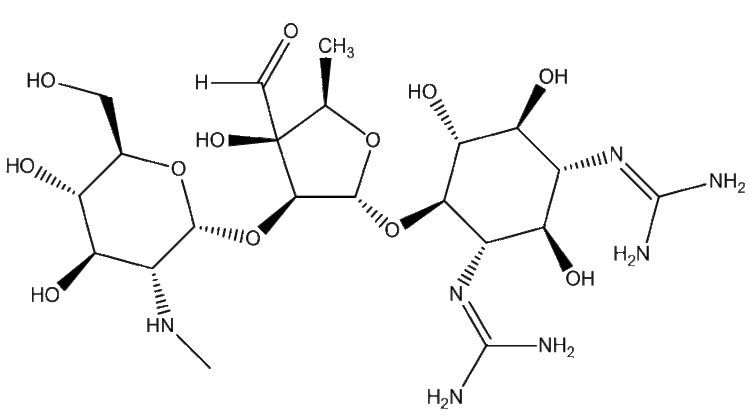 | ||
Pregnancycategory US: D (Evidence of risk) ATC code A07AA04 (WHO) J01GA01 (WHO) Legal status UK: POM (Prescription only)US: ℞-only Bioavailability 84% to 88% IM (est.)0% by mouth | ||
Streptomycin a pioneer antibiotic
Streptomycin is an antibiotic used to treat a number of bacterial infections. This includes tuberculosis, Mycobacterium avium complex, endocarditis, brucellosis, Burkholderia infection, plague, tularemia, and rat bite fever. For active tuberculosis it is often given together with isoniazid, rifampicin, and pyrazinamide. It is given by injection into a vein or muscle.
Contents
- Streptomycin a pioneer antibiotic
- Streptomycin 1948
- Treatment of diseases
- Pesticide and fungicide
- Cell culture
- Protein purification
- Spectrum of activity
- Side effects
- Mechanism of action
- History
- References

Common side effects include feeling like the world is spinning, vomiting, numbness of the face, fever, and rash. Use during pregnancy may result in permanent deafness in the baby. Use appears to be safe while breastfeeding. It is not recommended in people with myasthenia gravis. Streptomycin is in the aminoglycoside class of medication. It works by blocking the ability of 30S ribosomal subunits to make proteins which results in bacterial death.
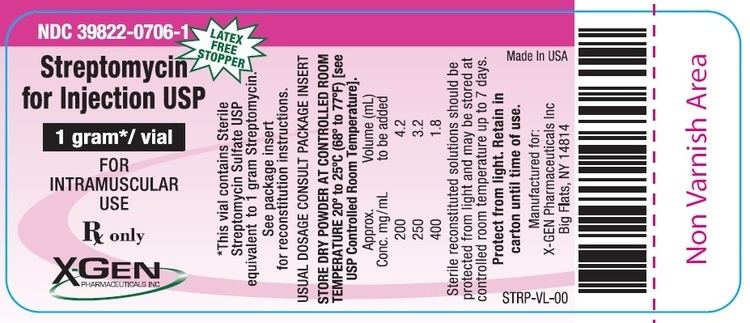
Streptomycin was discovered in 1943 from Streptomyces griseus. It is on the World Health Organization's List of Essential Medicines, the most effective and safe medicines needed in a health system. The wholesale cost in the developing world is between 0.38 and 4.39 USD per day. In the United States a course of treatment costs more than 200 USD.

Streptomycin 1948
Treatment of diseases

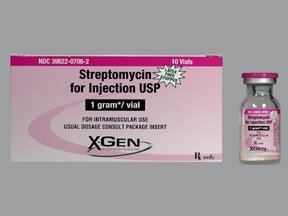
Streptomycin is traditionally given intramuscularly, and in many nations is only licensed to be administered intramuscularly, though in some regions the drug may also be administered intravenously.
Pesticide and fungicide
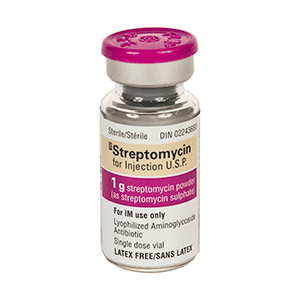
Streptomycin also is used as a pesticide, to combat the growth of bacteria, fungi, and algae. Streptomycin controls bacterial and fungal diseases of certain fruit, vegetables, seed, and ornamental crops, and it controls algae in ornamental ponds and aquaria. A major use is in the control of fireblight on apple and pear trees. As in medical applications, extensive use can be associated with the development of resistant strains.
Cell culture
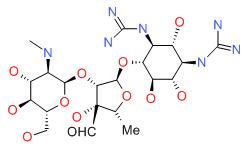
Streptomycin, in combination with penicillin, is used in a standard antibiotic cocktail to prevent bacterial infection in cell culture.
Protein purification
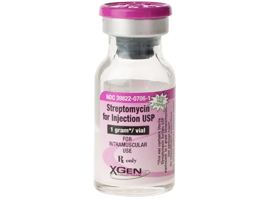
When purifying protein from a biological extract, streptomycin sulfate is sometimes added as a means of removing nucleic acids. Since it binds to ribosomes and precipitates out of solution, it serves as a method for removing rRNA, mRNA, and even DNA if the extract is from a prokaryote.
Spectrum of activity

Streptomycin can be used clinically to treat tuberculosis in combination with other medications and susceptible strains which cause bacterial endocarditis. The following represents MIC susceptibility for a few medically significant microorganisms.
Side effects

The most concerning side effects, as with other aminoglycosides, are nephrotoxicity and ototoxicity. Transient or permanent deafness may result. The vestibular portion of cranial nerve VIII (the vestibulococlear nerve) can be affected, resulting in tinnitus, vertigo and ataxia. Nephrotoxicity and can potentially interfere with diagnosis of kidney malfunction.
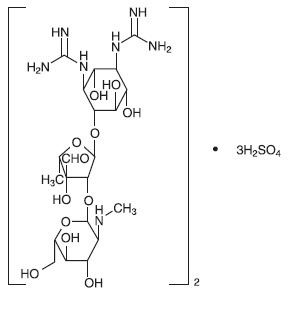
Common side effects include feeling like the world spinning, vomiting, numbness of the face, fever, and rash. Fever and rashes may result from persistent use.
Use is not recommended during pregnancy Use appears to be okay while breastfeeding.
It is not recommended in people with myasthenia gravis.
Mechanism of action
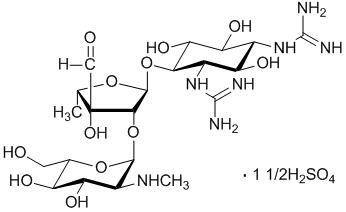
Streptomycin is a protein synthesis inhibitor. It binds to the small 16S rRNA of the 30S subunit of the bacterial ribosome, interfering with the binding of formyl-methionyl-tRNA to the 30S subunit. This leads to codon misreading, eventual inhibition of protein synthesis and ultimately death of microbial cells through mechanisms that are still not understood. Speculation on this mechanism indicates that the binding of the molecule to the 30S subunit interferes with 50S subunit association with the mRNA strand. This results in an unstable ribosomal-mRNA complex, leading to a frameshift mutation and defective protein synthesis; leading to cell death. Humans have ribosomes which are structurally different from those in bacteria, so the drug does not have this effect in human cells. At low concentrations, however, streptomycin only inhibits growth of the bacteria by inducing prokaryotic ribosomes to misread mRNA. Streptomycin is an antibiotic that inhibits both Gram-positive and Gram-negative bacteria, and is therefore a useful broad-spectrum antibiotic.
History
Streptomycin was first isolated on October 19, 1943, by Albert Schatz, a PhD student in the laboratory of Selman Abraham Waksman at Rutgers University in a research project funded by Merck and Co. Waksman and his laboratory staff discovered several antibiotics, including actinomycin, clavacin, streptothricin, streptomycin, grisein, neomycin, fradicin, candicidin, and candidin. Of these, streptomycin and neomycin found extensive application in the treatment of numerous infectious diseases. Streptomycin was the first antibiotic cure for tuberculosis (TB). In 1952 Waksman was the recipient of the Nobel Prize in Physiology or Medicine in recognition "for his discovery of streptomycin, the first antibiotic active against tuberculosis". Waksman was later accused of playing down the role of Schatz who did the work under his supervision.
At the end of World War II, the United States Army experimented with streptomycin to treat life-threatening infections at a military hospital in Battle Creek, Michigan. The first patient treated did not survive; the second patient survived but became blind as a side effect of the treatment. In March 1946, the third patient—Robert J. Dole, later Majority Leader of the United States Senate and Presidential nominee—experienced a rapid and robust recovery.
The first randomized trial of streptomycin against pulmonary tuberculosis was carried out in 1946 through 1948 by the MRC Tuberculosis Research Unit under the chairmanship of Geoffrey Marshall (1887–1982). The trial was both double-blind and placebo-controlled. It is widely accepted to have been the first randomised curative trial.
Results showed efficacy against TB, albeit with minor toxicity and acquired bacterial resistance to the drug.
